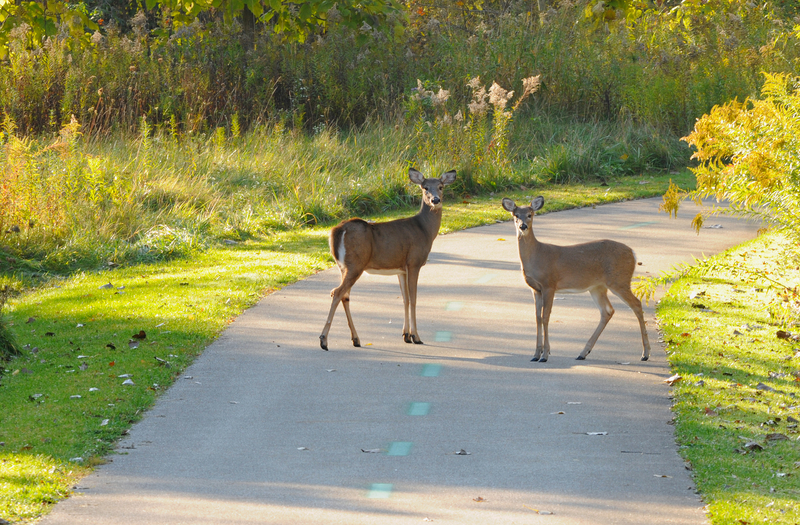This past week, I had the opportunity of meeting with one of our local Mayoral candidates, Bridget Newton, running for office in Rockville, MD. The small, intimate gathering was hosted by one of our neighbors, so we had a great opportunity to engage with Bridget on all things big and small. At one point during the discussion, the topic turned to the burgeoning deer population in our neighborhood. Like many urban neighborhoods with nice and expensive landscaping, the deer have made themselves at home in Fallsmead and are eating everything in sight.
One neighbor asked the candidate whether she supported a hunt to thin the herd. It was obvious from her fidgety answer that she was not supportive of such an option and, instead, suggested the kinder gentler approach of birth control. This response prompted some nervous chuckles from my neighbors. And as Bridget rightly pointed out, contraceptives been used in some places, by injecting the female deer with birth control. The problem, however, is that contraception is extremely expensive and isn’t always effective. And the concern about more contraceptives being discharged into our local streams, from the deer urine and feed that is laced with estrogenic compounds, does not strike me as an environmentally-friendly idea.
For those who still prefer a kindler gentler approach for dealing with this burgeoning problem, there is ongoing research at Tufts University involving the use of immunocontraception, which uses the animal’s own immune system to prevent fertility. This system will be used this year for the first time in Hastings NY, just outside of NYC and across the Hudson. I’m anxious to find out the costs and effectiveness of this program.
This population explosion has many risks and downsides, not the least of which is having to reinvest in new landscaping each year. As a former wildlife management major, I witnessed the terrible suffering of animals from starvation and chronic wasting disease from inadequate nutrition. While living in NC in the 1990s, I worked with several of my Duke colleagues to model the growth of the deer population in Durham County and estimated the asymptotic growth in deer-vehicle collisions. Not only were hundreds of deer fatally struck by vehicles, but we predicted several human deaths due to high-speed collisions. Nationwide, this problem, the risks, and costs are staggering.
According to the National Highway Traffic Safety Administration, there are about 1 million car accidents with deer each year that kill 200 Americans, cause more than 10,000 personal injuries, and result in $1 billion in vehicle damage. [full article here]
Unfortunately, animal rights activists and those opposed to hunting have exaccerbated this growing problem – a problem not only for the welfare of the individual deer and herd but the safety of our families . As a nature and animal lover, myself, I admire and respect these animals as much as anyone else. However, I’m a firm proponent of using old fashion methods to thin the herd. Until a newer and better method of controlling deer populations has been demonstrated, hunting remains the most effective and least expensive way to manage the herd, reduce animal suffering from starvation, reduce deer-vehicle collisions, and keep our children and family safe. Professional sharpshooters remain the best hope for the deer and our communities. And, as they do in Maine, New Hampshire, and other states, the meat from these animals can be donated to food banks to feed the hungry, helping to solve another big problem.
[Update: A friend just shared this humorous picture from Daily Picks and Flicks which, although I’m not convinced of its authenticiy, tends to reinforce my point.]

